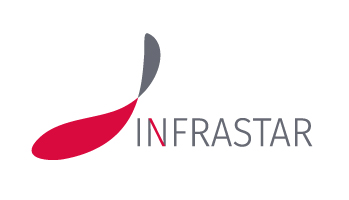NDT parameters for fatigue damage identification in structural elements
The service duration of structures like reinforced concrete bridges and wind turbines depends on the fatigue of structural components due to respectively traffic loading and wind action. In order to realistically evaluate fatigue damage, Non-Destructive Testing methods would be a real asset. In this project, ultrasonic sensor networks shall be used to detect and monitor fatigue damage in reinforced concrete of bridges subjected to traffic induced fatigue loading. Fatigue damage may be identified and analysed from microcracking in the bulk concrete material due to fatigue cracking in steel reinforcing bars that are usually the determinant fatigue vulnerable element in reinforced concrete. Fatigue damage determined from NDT shall be related to fatigue action effects.
Keywords:Non-Destructive Testing, ultrasonic methods, monitoring, reinforced concrete, fatigue.
Research fields:Non-Destructive Testing, wave methods, fatigue of reinforced concrete, structural health monitoring.
EPFL (Lausanne, Switzerland)
Swiss Federal Institute of Technology
36 months
From 01.02.2017 to 31.01.2020
The private PhD defence is scheduled for Thursday 26 November 2020.
The members of the jury are:
- Dr Miguel Fernández Ruiz, EPFL, Switzerland (President of the jury)
- Dr Alexis Kalogeropoulos, Princeton University, USA (reviewer)
- Dr Ernst Niederleithinger, BAM, Germany (reviewer)
- Prof. Ian F. C. Smith, EPFL, Switzerland (reviewer)
- Prof. Eugen Brühwiler, EPFL, Switzerland (PhD director)
The general objective is to correlate NDT parameters (e.g. ultrasonic velocity, attenuation, fibre optic) to fatigue related phenomena and parameters to identify any fatigue damaging process (i.e. the formation of microcracks in concrete, slow microcrack propagation in steel elements) in structural elements and components at the earliest possible stage.
Novel ways to analyse ultrasonic data in terms of damage shall be developed and imaging techniques shall be extended to structural field applications. This includes lab investigations using ultrasonic, acoustic emission methods and fibre optic in the laboratory to measure microcrack formation in materials due to fatigue, numerical simulation of observed phenomena on the micro level of material behaviour to investigate the existence of a fatigue endurance limit and application of the developed technology on an existing wind turbine tower and bridge deck slab at the most fatigue prone zones.
- Laboratory testing using ultrasonic, acoustic emission and fibre optic methods to measure microcrack formation in materials (concrete, steel rebars) due to fatigue.
- Numerical simulation of observed phenomena on the micro level of material behaviour to investigate the existence of a fatigue endurance limit.
- Application of the developed technology on an existing wind turbine tower and bridge deck slab at the most fatigue prone zones.
- Novel NDT methodology validated and applicable for the fatigue damage monitoring on structural elements and components of bridges and wind turbine towers.
- Implementation at a real structure.
- 3 accepted peer-reviewed papers.
- Successfully defended PhD thesis.
There are a series of easy to access papers on:
- The fatigue behaviour of concrete and steel rebars.
- Ultrasonic testing methods to detect microcracking.
Publications
- Bayane I., Brühwiler E.
Acoustic emission and ultrasonic testing for fatigue damage detection in a RC bridge deck slab
SMAR 2019 - 5th Conference on Smart Monitoring, Assessment and Rehabilitation of Civil Structures, Postdam, Germany, 27-29 August 2019
- Bayane I., Long L., Thöns S., Brühwiler E.
Quantification of the conditional value of SHM data for the fatigue safety evaluation of a road viaduct
ICASP13, The 13th International Conference on Applications of Statistics and Probability in Civil Engineering, Seoul, South Korea, 26-30 May 2019
- Abraham O., Niederleithinger E., Chapeleau X., Klikowicz P., Brühwiler E., Bassil A., Wang X., Chakraborty J., Bayane I., Leduc D., Salamak M., Katunin A., Sørensen J.D.
Addressing the need to monitor concrete fatigue with Non Destructive Testing: preliminary results of Infrastar European project
SMT and NDT-CE 2018 - Structural Materials Technology for Highways and Bridges (SMT) and the International Symposium on Non-Destructive Testing in Civil Engineering (NDT-CE), New Brunswick, New Jersey, USA, 27-29 August 2018
- Bayane I., Brühwiler E.
“Pocket-Monitoring” for fatigue safety verification of a RC bridge deck slab
IALCCE 2018, The Sixth International Symposium on Life-Cycle Civil Engineering, Ghent, Belgium, 28-31 October 2018
- Bayane I., Pai S. G. S., Smith I. F. C., Brühwiler E.
Model-Based Interpretation of Measurements for Fatigue Evaluation of Existing Reinforced Concrete Bridges
Journal of Bridge Engineering, Volume 26, Issue 8, August 2021
- Bayane I., Brühwiler E.
Structural condition assessment of reinforced-concrete bridges based on acoustic emission and strain measurements
Journal of Civil Structural Health Monitoring, September 2020
- Bayane I., Mankar A., Brühwiler E., Sørensen J.D.
Quantification of traffic and temperature effects on the fatigue safety of a reinforced-concrete bridge deck based on monitoring data
Engineering Structures, Volume 196, October 2019
- Mankar A., Bayane I., Sørensen J.D., Brühwiler E.
Probabilistic reliability framework for assessment of concrete fatigue of existing RC bridge deck slabs using data from monitoring
Engineering Structures Journal, Volume 201, December 2019
Fatigue examination of reinforced-concrete bridge slabs using acoustic emission and strain monitoring data
Outreach activities
- Maintains and updates an individual blog on a regular basis. Read her posts.
- Participated in the ENAC Research Day.
- Participated in the BAM PhD day.
- Recorded a video as done within the so-called Three Minute Thesis (3MT®). Watch the video.
Contact
Contact
ESR4: Imane Bayane (EPFL)
Contact
Local academic supervisor: Prof. Eugen Brühwiler (EPFL)
Contact
Industrial co-supervisor: Dr Piotr Klikowicz (NeoStrain)

